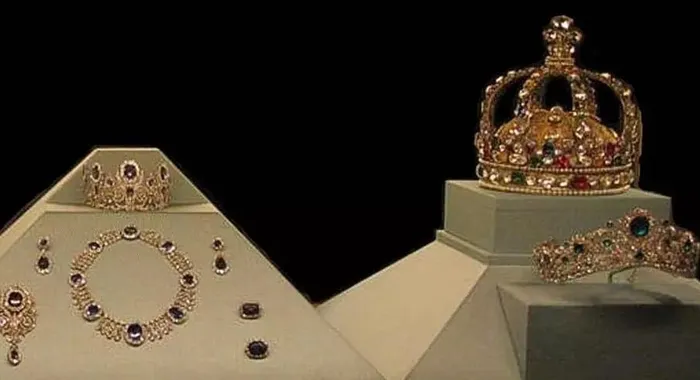Pricy heists from Paris to Pringle Bay raised alarms over protection of high value treasures

These are some of the priceless Napoleonic jewels that were stolen at the Louvre Museum in Paris. Sophisticated criminal networks appeared to be shifting their attention from high security jewellery stores to galleries, museums and private collectors as recent global heists highlighted growing risks to rare and valuable assets.
Image: YouTube
The theft of priceless jewels from the Louvre in Paris on Sunday a few weeks ago, shocked the world and reignited concerns over the protection of high value items steeped in heritage and history.
In a scene that resembled a Hollywood blockbuster, thieves made off with historical pieces that included a sapphire and diamond tiara once owned by Empress Eugenie and jewels that formed part of Napoleon’s wedding gift to Marie Louise.
Officials described the stolen works as objects with both significant financial value and “inestimable” national importance.
Reports indicated that this brazen heist formed part of a broader pattern where organised crime groups turned their focus to museums and galleries.
With high end jewellery stores becoming increasingly fortified, criminals appeared to see public cultural institutions as softer targets.
In 2024, a theft at another Paris museum resulted in a £3 million insurance payout to the Royal Collection Trust after robbers smashed display cases to steal two royal artefacts which were antique snuff boxes decorated with gold and diamonds.
Tarina Vlok, managing director of Elite Risk Acceptances which is a high net worth insurer under Old Mutual Insure, said the threat extended beyond Europe and beyond museums.
“For collectors, art lovers and owners of fine jewellery, the risk to high value assets is not limited to museums or public institutions. The same threats, theft, damage or loss, apply to private collections whether they are kept in safes at home, displayed on walls, worn or loaned out for exhibition,” said Vlok.
South Africa faced similar risks. In August this year the quiet coastal town of Pringle Bay made headlines after a R1 million art heist at the FOMO Fine Art Gallery. Seven sculptures by renowned South African artists Anton Smit and Janko de Beer were stolen.
Authorities believed the operation was carefully planned given the heavy size of the outdoor pieces and the coordinated effort required to remove them. The method showed organised intent rather than opportunism.
Vlok said these incidents likely represented a growing sophistication in criminal activity targeting valuable possessions and objects of art whether held in private homes, galleries or museums.
She explained that standard home insurance did not always provide adequate protection. “Speak to your broker or insurer to find out what is the best way to accommodate high value items,” said Vlok. She noted that collectors faced specific risks when purchasing one of a kind items such as damage in transit, fire, water and theft.
“Remember too that you need to take adequate safety and security precautions around your home as theft of high value items remains a significant threat in South Africa,” she said.
She added that secure storage such as safes was vital for collectible jewellery. “Some insurers may also further specify whether your home safe needs to be wall or floor mounted.”
Vlok shared guidance for collectors seeking to better protect their assets. She warned against undervaluing jewellery or art to reduce premium costs as this could result in lower payouts at claims stage.
She said rare jewellery should have insurance that considered both market value and replacement value.
She added that outdoor artworks also required proper cover especially larger pieces displayed in gardens that were still vulnerable to loss or damage.
She advised collectors to take all possible safety steps. Items kept in bank vaults may attract lower premiums but insurers could require notification each time a client removed the item to wear it.
Where clients failed to comply, losses might not be covered. She also recommended obtaining specialist valuations for rare pieces and insisted that certificates of provenance could be critical for insurance purposes.
“Owners should ensure their security measures and insurance coverage truly reflect the value and risk profile of their collections,” said Vlok.
“This is especially relevant as we approach silly season where targeted crime and opportunism often go hand in hand. It is important to remember that criminals take advantage of holiday goers, empty homes and relaxed vigilance during the festive season.”
As global crime trends continued to shift, South African collectors were urged to remain alert and proactive in safeguarding irreplaceable treasures that carry history, heritage and legacy.
BUSINESS REPORT